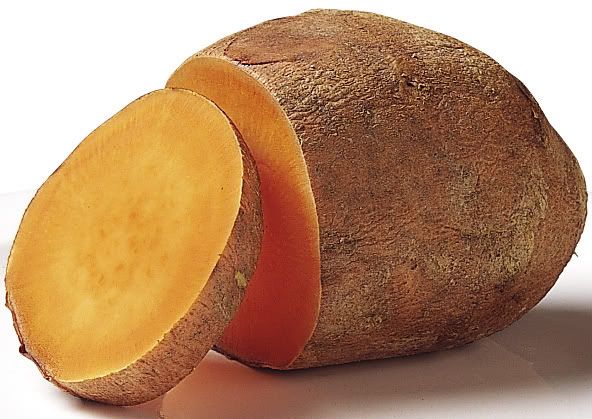Here is a list of 10 foods you really should be incorporating into your CE regimen. These are packed with vitamins, minerals, and the Clean essentials you need to fuel your body and energize yourself. Try eating these 10 on a rotating basis for variety - try 1 or 2 items a day in conjunction with the "superfoods" you are already eating in your quest to stay on a Clean path.
1. Sweet Potatoes
A nutritional All-Star — one of the best vegetables you can eat. They're loaded with carotenoids, vitamin C, potassium, and fiber. Bake and then mix in some unsweetened applesauce or crushed pineapple for extra moisture and sweetness.
2. Mangoes
Just one cup of mango supplies three-quarters of a day’s vitamin C, onequarter of a day’s vitamin A, a decent dose of blood-pressure-lowering potassium, and 3 grams of fiber. Bonus: mango is one of the fruits least likely to have harmful pesticide residue.
3. Unsweetened Yogurt
Plain yogurt has a pleasant tartness that’s a perfect foil for the natural sweetness of berries, bananas, or for your favorite breakfast cereal. It has more protein, potassium, calcium, zinc, and vitamins B-6 and B-12 than sweetened yogurt. That’s because it doesn’t have to share the container with the sugary preserves or the sugar that’s in many flavored yogurts.
4. Broccoli
It has lots of vitamin C, carotenoids, and folic acid. Steam it just enough so that it's still firm and add a sprinkle of red pepper flakes and a spritz of lemon juice.
5. Wild Salmon
The omega-3 fats in fatty fish like salmon can help reduce the risk of sudden-death heart attacks. And wild-caught salmon has less PCB contaminants than farmed salmon.
6. Crispbreads
Whole-grain rye crackers, like Wasa, Ry Krisp, and Ryvita — usually called crispbreads — are loaded with fiber and often fat-free.
7. Garbanzo Beans
All beans are good beans. They’re rich in protein, fiber, iron, magnesium, potassium, and zinc. But garbanzos stand out because they’re so versatile. Just drain, rinse, and toss a handful on your green salad; throw them into vegetable stews, curries, and soups; mix them with brown rice, whole wheat couscous, bulgur, or other whole grains.
8. Watermelon
Watermelon is a heavyweight in the nutrient department. A standard serving (about 2 cups) has one-third of a day’s vitamins A and C and a nice shot of potassium for only 85 fat-free, salt-free calories. And when they’re in season, watermelons are often locally grown, which means they may have a smaller carbon footprint than some other fruits.
9. Butternut Squash
Steam a sliced squash or buy peeled, diced butternut squash at the supermarket that’s ready to go into the oven, a stir-fry, or a soup. It’s an easy way to get payloads of vitamins A and C and fiber.
10. Leafy Greens
Don’t miss out on powerhouse greens like kale, collards, spinach, turnip greens, mustard greens, and Swiss chard. These standout leafy greens are jam-packed with vitamins A, C, and K, folate, potassium, magnesium, calcium, iron, lutein, and fiber. Serve with a splash of lemon juice or red wine vinegar.










